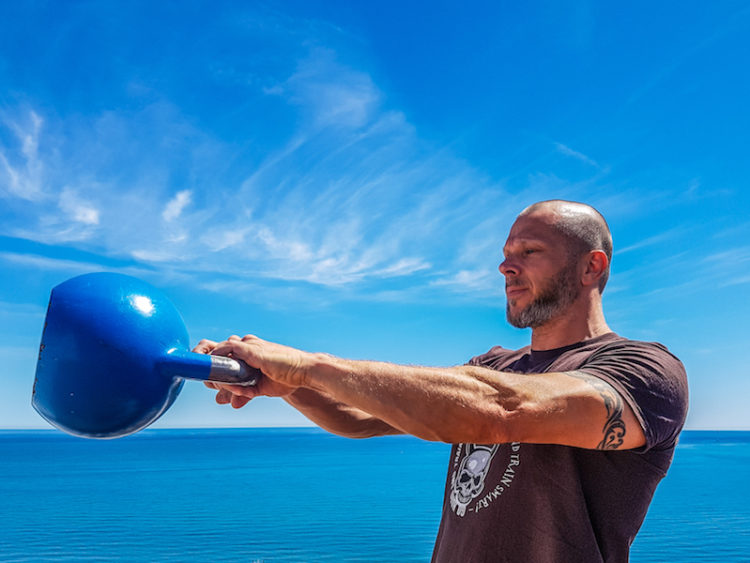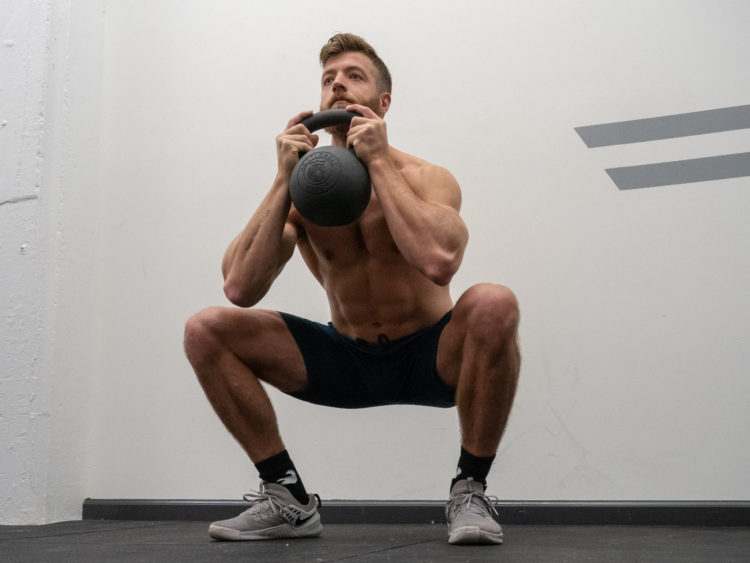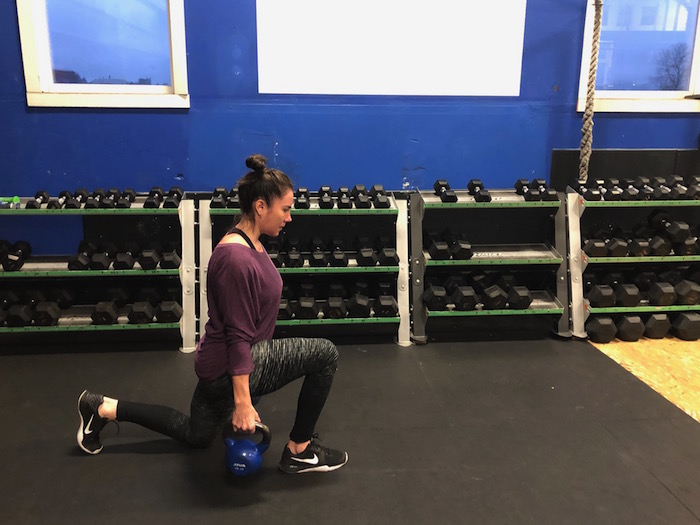If you’re looking to build a powerful squat and formidable deadlift, there’s no way around it — you need to develop strong glutes.
If you’re yanking the bar off the ground and mostly relying on your low back to do the work, you’re not only setting yourself up for injury, but you’re not going to be able to reach your maximum potential. Same with squatting — if you’re primarily relying on brute quad strength, you’re probably not squatting deep enough.
So if you want to be doing your big lower body lifts with proper form (and massive weights), glute strength is definitely a focus you need to have.

Why Kettlebells for Glute Strength?
Because kettlebells are pretty much good for everything. Next section.
No, but really, kettlebells provide a unique opportunity to bring variety to your training patterns, shocking your body — in a low- to no-impact, joint-healthy way — into untapped potentials for muscular and cardiovascular development.
If you’re only training with a barbell (and this is nothing against barbells — I live for the feeling of a barbell on my back), you’re just not going to give your body the unilateral, momentum-based challenges it needs to continue improving. Whether you’re interested in busting through plateaus, strengthening underutilized muscles, or improving your conditioning so you can last longer in your heavy training sessions, kettlebells are the way to go.
And for glute strength? With the ballistic nature of so many kettlebell movements, combined with the odd shape that will fire your stabilizer muscles like little else, kettlebells will allow you to refine the kind of explosive strength you’ll need to lock out your deadlift and come out of the hole in your squat. The proper form for hip extension (and subsequent massive glute strength) is key for swings, which are a staple of most kettlebell workouts, including the ones below.
[Related: 5 ways kettlebell training improves your barbell lifts]
The three choices below all emphasize a different goal, but all will also build powerful glutes that can help unstick your toughest deadlifting and squat plateaus. But depending on what you’re already doing in your current program — or the goals you’re setting for your new cycle — the workout options below will allow you to choose what’s best for you, your body, your program, and your goals. Do you want to build glute strength with a conditioning focus, a lifting focus, or a hybrid focus? The world is your kettlebell oyster (just go with it).

Workout 1: Conditioning
Don’t be misled by the conditioning emphasis here: rest assured that these momentum-based moves will recruit a massive amount of muscular activation in your glutes, hamstrings, and core — all essential for developing well-balanced strength and endurance exactly where you want it.
1A: Kettlebell Swing
30 seconds.
Make sure you’re not hyperextending your back at the top of the lift. Yes, you want to get in a solid hip snap, but don’t yank your low back all the way through the swing — you’ll only compromise the integrity of your back, which will help exactly nothing. Keep your elbows soft but not bent, select a moderate weight for which you can confidently do 15 reps, and breathe. (Here’s a guide to picture perfect kettlebell swings if you need a refresher.)
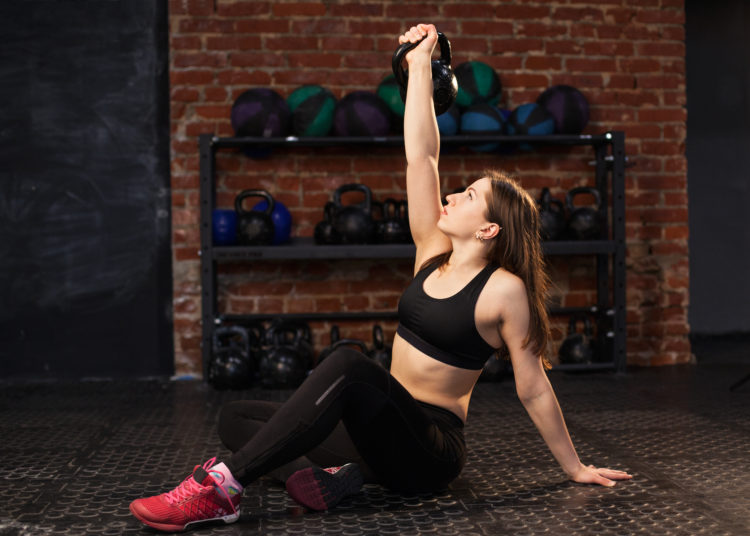
1B: Turkish Get-Up
30 seconds per side, rest 90 seconds. Repeat round 3x.
You’ve only got thirty seconds per side here, but you want to focus on quality rather than rep quantity. Always keep your wrist straight (“motorcycle” it forward so the weight of the bell doesn’t tug your wrist back) and exhale with each new segment of the move. Keep your shoulder packed at all times, and make eye contact with the bell, always. Move slow and deliberately.
And when you’re lifting the bell straight above you so you can prepare to transition into kneeling — here’s one place (other than the lunges) where your glutes really come into play — squeeze your glutes so that your extended foot doesn’t leave the ground as you’re getting up. Making sure your extended foot stays grounded is tough because it requires a lot of core and — you guessed it — glute strength. So keeping your form super strict here will be extra good for your glutes (and the rest of your body, too).
[Related: How to do a Turkish Get Up]
2A: Dead Swing
30 seconds.
Ah, dead swings. You might feel dead after them, but like, in a good way.
They’re the same as a regular kettlebell swing, except you will finish each rep by letting the bell come to a full (“dead”) stop on the ground in front of you.
To be clear: set up with the bell a foot or two in front of you, hinge to grasp it, use your hips to swing it back behind you between your legs, use your hip snap to bring the bell up to chest level, let it swing back down between your legs, and then, instead of bringing it up again, let it go from between your legs to the ground in front of you.
It’s okay if the landing isn’t clean, especially as you’re getting used to the movement. Reset yourself each time. This dead stop will kill the momentum between each swing, requiring you to recruit even more energy to blast off each time. (Think about the difference between Pendlay rows and barbell rows, or the difference between your first deadlift rep and the second. (Assuming you’re not bouncing your deadlifts off the ground, but that’s another story.)
2B: Kettlebell Clean
30 seconds per side, rest 90 seconds. Repeat round 3x.
To avoid the infamous forearm flop, make sure your motion is… well… clean. Keep your arm locked close to your ribcage throughout the motion, so that when you thread your hand up and through so that the bell transitions to resting on your forearm in rack position, it won’t leave you with bruises. Remember that the momentum should come from your initial pull, rather than extra yanking on the way up.
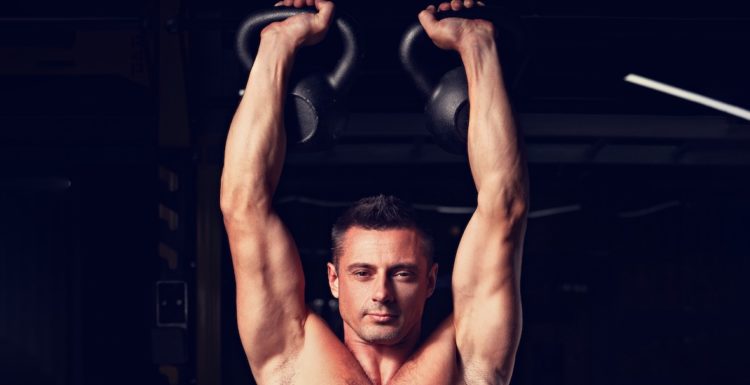
3A: Kettlebell Thrusters
30 seconds.
Keep two kettlebells in rack position — make sure you can comfortably complete 15 overhead press reps with the weights you choose — and sink into a front squat, using your momentum on the way up to thrust the bells up into an overhead press. Bring the bells back down with control, tight close to your body so that the return back to rack position is smooth. Sink right back into another front squat and repeat. Make sure you’re squatting below parallel for maximum glute engagement.
[Related: 6 benefits of kettlebell thrusters]
3B: Double Kettlebell Swing
30 seconds, rest 60 seconds. Repeat round 3x.
If you want an extra challenge, move directly into your swings with the bells still in your hands. Your forearms will hate you, but they’ll thank you for it later. Rotate your wrists so your palms are facing each other, widen your stance, and get into your double bell swings. Make sure you’re breathing and pressing down into your toes so that your feet stay stable and balanced throughout the movement.
[Related: How to break through a plateau by switching to kettlebells for a week]
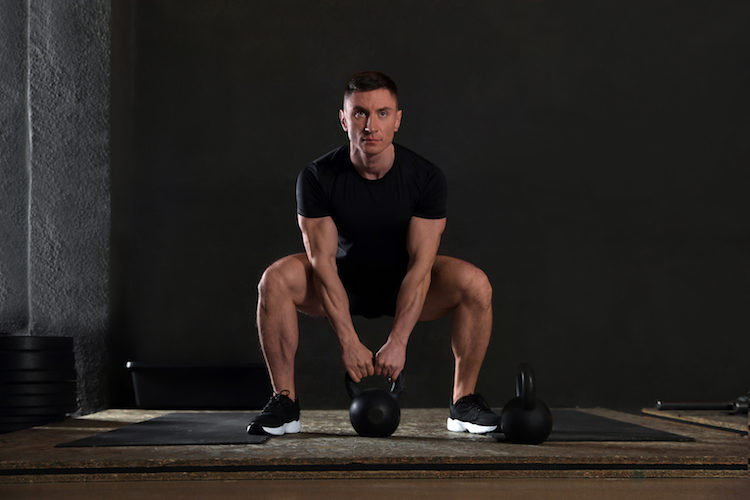
Workout 2: Lifting
For the first two combinations, you’ll notice that you’re starting with a bilateral move (both feet on the same plane), followed by a unilateral movement (with your feet staggered). You want to make sure that you’re getting even muscular development — especially because we tend to sit more often than not, it’s pretty easy to have some pretty nasty imbalances around our hips and glutes. Working unilateral moves will help even those imbalances out (and give you stronger glutes overall, so really, everybody wins).
1A: Kettlebell Deadlift
3×8.
There’s a little more squat in a kettlebell deadlift than there should be in a barbell deadlift (because of the narrower center of mass), but remember that the move is still primarily a hip hinge. Your knees will bend a little more than they probably will when lifting a barbell, but as long as you’re lifting primarily with your glutes rather than your quads, you’re good.
1B: Single-leg Kettlebell Deadlift
3×6 per side, rest 60 seconds, repeat round 3x.
Go light with these, and don’t feel the need to have the bell touch the ground. In fact, many people should probably avoid that with this move (unless you have absurdly flexible hamstrings, all the more power to you). Feel free to stop descending when the bell dips below your knee, and keep it slow and steady as you’re standing back up. Your stabilizer muscles and glutes won’t like you very much, but they will definitely benefit from the extra time under tension and strict attention to form.
2A: Goblet Squat
3×8.
You can approach this like a double-racked front squat, or just squeeze one kettlebell in front of your chest for a true goblet squat. Either way, hitting below parallel will challenge the heck out of your glutes (not to mention your core), which is exactly what you’re looking for.
2B: Front-racked Walking Lunges
3×6 per side, rest 60 seconds, repeat round 3x.
These are going to suck. Sorry (but seriously, though, if there’s ever any pain or you need to stop for any reason, please please do). It’ll challenge your core, your sense of balance, your desire to keep working out… but you’ll get through it. Six reps per side. Keep your back pretty upright rather than hunching over the weight, and you can do this.
3A: Front-racked Lateral Lunges
3×6 per side.
It’s okay if you have to experiment a bit to figure out exactly how far to lunge out to the side. In general, though, you don’t want your foot to be so close to your body that your knee spills over it laterally; and you don’t want your foot to be so far from your body that you can’t lean back (hips! hips! hips!) and sit into the side lunge with your knee thigh comfortably hitting parallel (or below) to the ground. Experiment with finding your own personal sweet spot before racking your weight.
3B: Kettlebell Split Squats
3×6 per side, rest 75 seconds, repeat round 3x.
These, too, will just suck. But in a good way? (If it’s not in a good way, definitely abort the mission.) Again, finding your sweet spot might take a little experimentation, but that’s okay. Just make sure your hips are squared, and that when you lunge down, your back foot can stay in its place in a stable manner, touching or nearly touching the ground.
Related: What’s the difference between a split squat and a lunge?]
Workout 3: Hybrid
If you’re looking for to use a variety of kettlebell training styles, want to improve your work capacity while strength training, or just generally subscribe to the idea that “both is good,” you might want to try a hybrid workout that combines conditioning and lifting. Make sure your form stays excellent throughout, and that momentum from your swings don’t translate into your slower, steadier lifts.
1A: Kettlebell Swing
30 seconds.
You know what to do. Don’t forget to breathe.
1B: Goblet Squat
3×10, rest 60 seconds, repeat 3x.
Keep these slow and controlled. Sure, you’re just coming off a momentum-based movement, but make sure you stay focused on form.
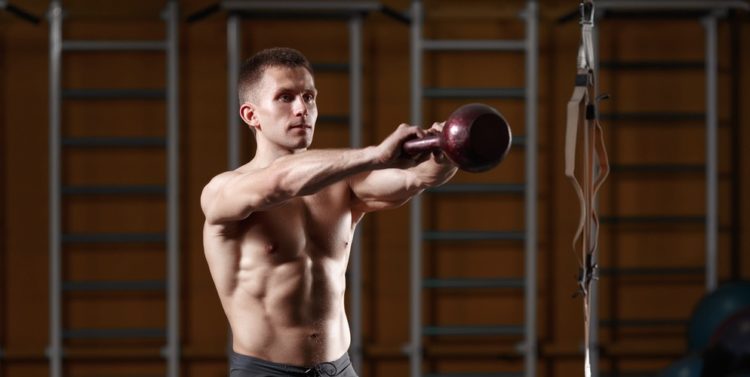
2A: Dead Swing
30 seconds.
Keep your hips snappy, but don’t hyperextend your back. Like, ever.
2B: Front-racked Lateral Lunges
3×6 per side, rest 75 seconds, repeat 3x.
Make sure you take the time to set up this lift, finding your proper footing before you dive in.
3A: Double Kettlebell Swing
30 seconds.
Exhale with each hip snap, keeping your core tight throughout (and again, just say no to hyperextension).
3B: Kettlebell Split Squats
3×6 per side, rest 75 seconds, repeat 3x.
Hips squared, shoulders back, and you’ll do just fine.
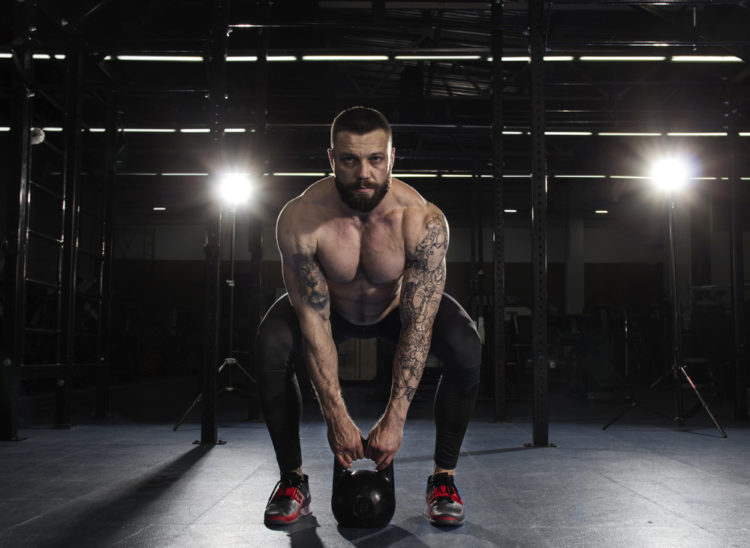
Get Your Glute Strength On
Using kettlebells to make your glutes that much more powerful is a great way to add variety to your training. Adding these kettlebell accessory movements to your regularly scheduled programming will add an element of power and instability (in the positive, muscle-building sense) that will translate into improved squat and dead numbers. Plus, well… who’s ever going to complain about you getting an even more badass butt?
Featured image via UfaBizPhoto/Shutterstock
